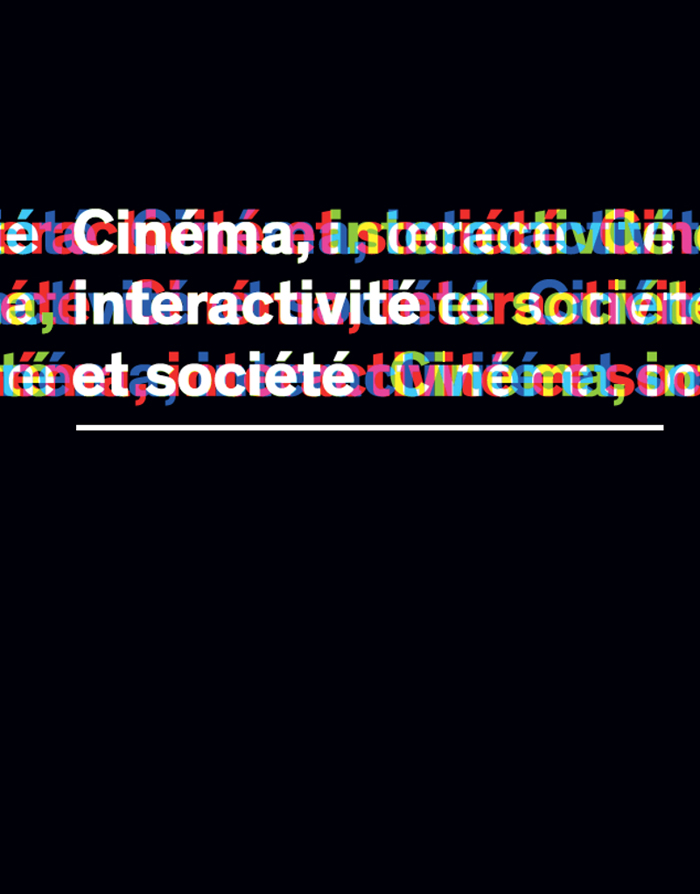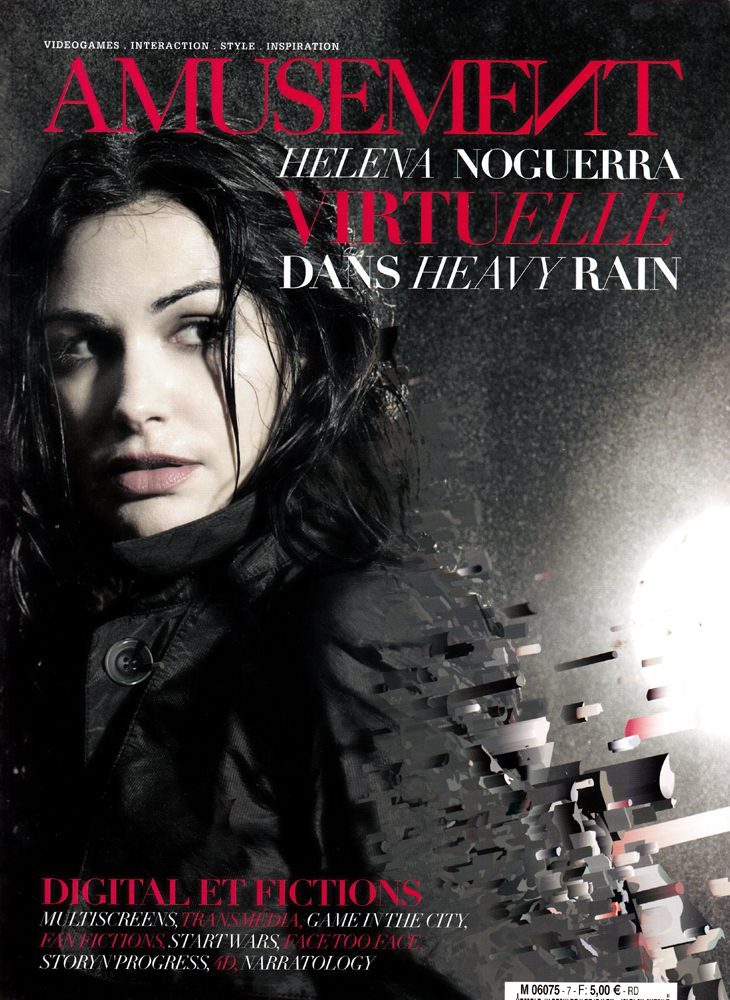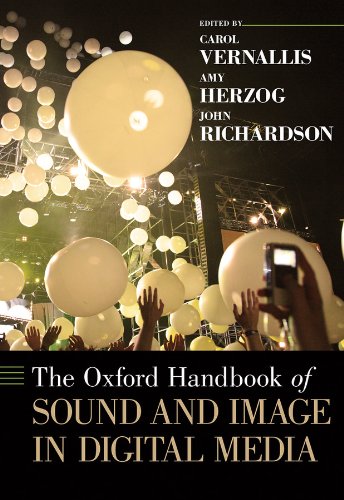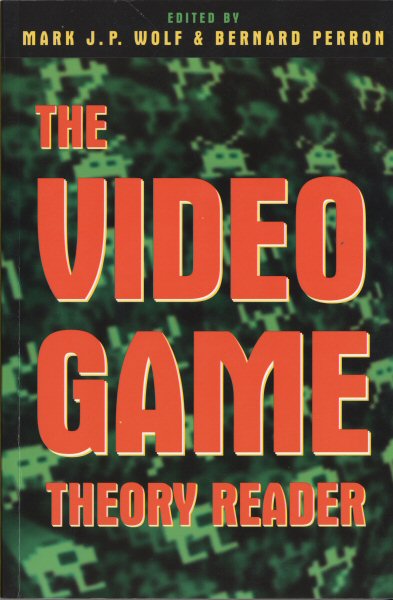Interactive movies
Under the supervision of Bernard Perron
This research project focused on the phenomenon of interactive cinema, specifically on works that integrate live action sequences and interactive possibilities. From the outset, it is interesting to underline that what we consider as the «first» interactive film, Raduz Cincera’s One Man and His World, was presented here in Canada during Montreal’s Expo 67. However, this geographic proximity is far from being the most interesting aspect of the phenomenon. Interactive cinema experiences, at least in the popular entertainment domain, are increasingly rare and the genre has undergone an undeniable decline. Nevertheless, at the turn of the 1990s, the enthusiasm around these experiences seemed to announce the coming of a new genre with a bright future ahead. The project emerged out of this first historical observation; what could have triggered this decline?
The project has allowed us to better understand what distinguishes interactive cinema and to see how it has (dis)integrated within the broader mediatic fields. Thanks to documentation, it has contributed to preserving the memory of a large body of works that were assimilated (more or less) to “interactive movies”. Our investigations led to a distinction between three types of manifestations: the interactive movie itself, the movie-game (associated more specifically to video games), and media arts, a practice that is as rich as it is diffuse. In so doing, over 421 works connected to interactive cinema were listed and indexed between 2004 and 2008. This research program has led to the analysis of a great number of works that sure seem “dated”, but still reflecting on the contemporary audiovisual interactive culture (immersion, interactivity, narration, attraction) in an exemplary manner.
Grant Social Sciences and Humanities Research Council Canada (SHRC): “A History and Theory of Early Interactive Movies” (2004-2008)
Research Assistants
- Dominic Arsenault (2005-2008)
- Martin Picard (2006-2008)
- Guillaume Roux-Girard (2007-2008)
- Carl Therrien (2005-2008)
– Database: Filmography of early interactive cinema
Chapitres de livre et articles

Perron, Bernard, et Simon Dor. 2014. « Addressing the Preservation of Gameplaying: Archiving Actional Modalities (Execution,Resolution, and Strategy) ». Dans Bernard Perron et Federico Giordano (dir.), The Archives: Post-Cinema and Video Game Between Memory and the Image of the Present, p. 117-200. Milan : Mimesis International.

Perron, Bernard. 2013. « La sempiternelle attraction du cinéma interactif ». Dans Jean-Marie Dallet (dir.), Cinéma, interactivité et société, p. 61-81. Montrouge et Québec : Éditions Burozoïque et Presses de l’Université du Québec.

Perron, Bernard. 2012. « Interactive Movies ». Dans Mark J.P. Wolf (dir.), Encyclopedia of Video Games: The Culture, Technology, and Art of Gaming, p. 322-324. Westport : Greenwood Press.

Perron, Bernard. 2010. « DVD et cinéma interactif ». Dans Leonardo Quaresima et Valentina Re (dir.), Play the Movie, Il DVD e le nuovo forme dell’esperienza audiovisia, p. 133-149. Turin : Kaplan.

Perron, Bernard. 2010. « Videoplay ». Amusement, n° 7 (janvier-mars), p. 198-199.

Perron, Bernard. 2009. « Entre bande dessinée, cinéma et fiction interactive : l’écran divisé du BDVD ». Dans Leonardo Quaresima et Laura Ester Sangalliet Federico Zecca (dir.), Cinema e Fumetto/Cinema and Comics, p. 609-626. Udine : Forum. [PDF]


Perron, Bernard. 2008. « Genre Profile: Interactive Movies ». Dans Mark J.P. Wolf (dir.), The Video Game Explosion: A History from Pong to PlayStation and Beyond, p. 127-133. Westport : Greenwood Press. [PDF pré-publication]


Perron, Bernard. 2007. « T’es où [Luc Courchesne]? ». Intermédialités, Jouer, n° 9 (printemps), p.156-175.


Autres publications pertinentes

Aldred, Jessica. 2013. « ‘I Am Beowulf! Now, It’s Your Turn’: Playing With (and as) the Digital Character in the Transmedia Franchise ». Dans Amy Herzog, John Richardson et Carol Vernallis (dir.), The Oxford Handbook of Sound and Image in Digital Media, p. 381-396. New York : Oxford University Press.

Perron, Bernard. 2003. « From Gamers to Players and Gameplayers: the Example of Interactive Movies ». Dans Mark J.P. Wolf et B. Perron (dir.), The Video Game Theory Reader, p. 237-258. New York : Routledge. [PDF]

An Afternoon in the Heavy Rain
Joint Ludiciné/GameCODE 2010 Symposium.
Aftermath Media
Concepteur des films interactifs Tender Loving Care (1999) et POV (2001).
Beyond Interactive Cinema
Article de Birk Weiberg qui rend compte de quelques expériences de cinéma interactif (2002).
Cause and Effect
Site du projet Cause and Effect, hybride performance théâtrale / cinéma interactif.
Future Cinema
Exposition de dispositifs cinématographiques, vidéographiques et d’installations informatiques qui annoncent le cinéma de demain, tenue de novembre 2002 à mars 2003.
Hyperbole Studios
Concepteurs de films-jeux, notamment Quantum Gate (1993) et The X-Files Game (1998).
ICinema
Centre de recherche sur le cinéma interactif de l’University of New South Wales.
Interactive Cinema Group
Groupe de recherche sur le cinéma interactif du MIT sous la direction de Gloria Davenport.
KinoAutomat
Projet de reconstitution sur dvd du cinéma interactif KinoAutomat (1967), dirigé par Chris Hales.
Office Voodoo
Site du film interactif Office Voodoo de Michale Lew (2002), “an algorithmic film with real-time editing engine”.
Switching
Site du film interactif sur DVD Switching de Morten Schjodt (2003).
VirtualCinema
Outil de création développé par Hyperbole, utilisé notamment pour The X-Files Game (1998).
WaxWeb
Film interactif en ligne (également disponible sur cédérom) développé par David Blair (1991).
